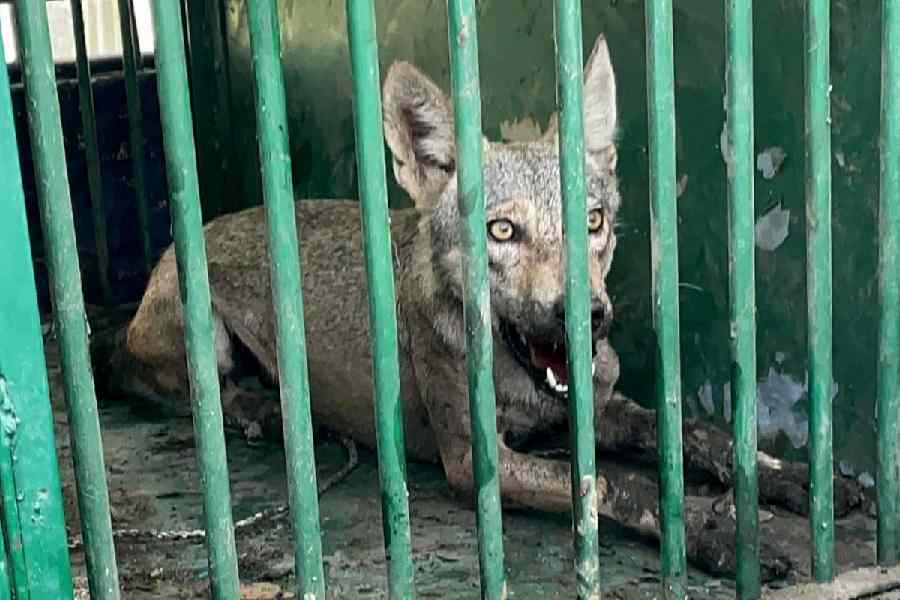The dodo was a flightless bird about the size of a male turkey that had a long, hooked beak and the goofy charm of an emperor penguin. Its ancestor first appeared on Earth more than 25 million years ago, and by 1662, because of humans, it had vanished from Mauritius, a remote island in the Indian Ocean, the only place it ever existed.
The dodo has since become fixed in society’s imagination as the very emblem of ineptitude, an evolutionary clown — an impression greatly helped by the bird’s appearance in Alice’s Adventures in Wonderland in 1865.
In 1941, the humorist Will Cuppy wrote that the dodo — with an ugly face, a misplaced tail, too-small wings and a prominent stomach — seemed to have been invented for the sole purpose of becoming extinct. “You can’t look like that and survive,” he mused. “Or can you?”
Neil Gostling, a paleobiologist at the University of Southampton in England, listens to these aspersions and laughs. “Eighty-three years later, the idea persists that dodos were slow, fat, useless balls of feathers that blundered into their own demise,” he said.
“The fact is that the birds were fast, agile and, before being wiped out, had been doing their thing and doing it incredibly well for about 12 million years.”
Gostling was an author of a recent paper published in The Zoological Journal of the Linnaean Society that tried to set the record straight. By revisiting 400 years of literature and analysing fossil evidence — including the world’s only surviving soft tissue from a dodo, kept in the Oxford University Museum of Natural History — his team of scientists undertook the most comprehensive review to date of the bird’s taxonomy and evolutionary history.
The team’s research forms the bedrock of a broader project to shed light on the dodo’s role in the ecosystem of Mauritius, which was once almost entirely a dense forest of ebony and bamboo.
Julian Hume, an avian palaeontologist at the Natural History Museum in London who collaborated on the study, said of the dodo: “Perhaps no creature has been so widely written about yet so poorly understood.”
The dodo was the first recorded extinction directly caused by humans and witnessed in real time, and it went extinct a century before the scientific rules of naming species were formalised, Gostling said. “Our aim was to provide new insights into its biology, behaviour and what led to its disappearance.”
Dumb as a dodo?
In reassessing the dodo, the researchers also sought to bring clarity to the story of its closest relative, the Rodrigues solitaire. Also flightless, the gooselike bird was endemic to the equally isolated island of Rodrigues, which is 560km east of Mauritius. After humans settled on the island, the solitaire vanished for good around 1750.
The new study reconfirmed that the dodo and the solitaire were columbids, members of the pigeon and dove family prized for their singular intelligence — an attribute that runs counter to the notion that the dodo was destined to die out because it was too stupid to survive.
The researchers also concluded that there was just a single species of the dodo (Raphus cucullatus) and the solitaire (Pezophaps solitaria). They created a new family group name, Raphina subtribus nova, to unite the two birds.
Genetic testing suggests that around 25 million years ago the two species shared a common Southeast Asian ancestor, which diverged about 12 million years ago into what became the dodo and the solitaire.
Hume said the ancestral species, which could fly, island-hopped along the emergent Mascarene Plateau, an undersea archipelago that extends about 1,930km from the Seychelles in the north to Réunion in the south. The dodos evolved on Mauritius, which arose through volcanic activity some eight million years ago, and the solitaire stopped on Rodrigues, which popped up some 6.5 million years later.
Both birds were well adapted to their isolated habitats. The dodo’s large bill had a hooked tip that appears to have been its only real defence. (One 17th-century seaman called the dodo’s beak its “war weapon”.)
Likewise, the clublike bone growths on the end of each solitaire wing were presumably used against other solitaires in turf wars. In the absence of mammalian predators, the dodo and the solitaire, both fruit eaters, gradually began to fly less and walk more. In these resource-rich subtropical settings, their size increased so drastically that they lost their ability to fly.
The consensus among the investigators is that the average adult male dodo stood 2.5ft tall and weighed about 14kg, while the average female weighed about 10kg.
For contrast, the typical male solitaire would have tipped the scales at a massive 27kg. Both birds had annual cycles during which they were plump for several months and relatively slender the rest of the year. “This would have given them a survival advantage when cyclones hit the islands between November and March,” Hume said.
The word “dodo” has multiple possible origins. It may have been coined by the Portuguese mariners who visited Mauritius in 1507 and called the bird “doudo”, meaning “fool” or “crazy”.
Or perhaps the name came from Dutch sailors, who colonised the island in 1598 and called the bird “dodaersen” (“fat behind”) on account of its generously proportioned rump. A third possibility: “Dodo” was an onomatopoeia of the bird’s call, which may have resembled the two-note “coo” that male band-tailed pigeons make to attract mates.
Hume said the dumb-as-a-dodo trope might have arisen from the way the trusting bird remained still when approached by half-starved sailors, only to be clubbed on the head and trussed up for dinner. According to journal entries of Dutch seafarers, as many as 50 dodos were killed in a single day.
For the men on the exploratory fleets that came ashore at the island, the preferred game was parrots and pigeons. Dodos were an acquired taste. “Greasie stomackes may seeke after them, but to the delicate they are offensive and of no nourishment,” Thomas Herbert, an English writer, observed in a 1634 travelogue.
Hume noted that because the bird was flightless, it lacked the breast meat of, say, chickens. “And the wings were small, so not much flesh there either,” he said. Instead, its legs were bulky, to support the bird’s great weight, but were considered tough and loathsome to eat.
Still, he said, the dodo was not entirely unpalatable: The large, muscular gizzard was considered a delicacy. The remaining flesh was salted and stored in barrels to feed crews on their trading journeys.
Decline and fall
Much of the scientific community’s early understanding of the dodo was shaped by fragmented remains, hearsay from sailors’ accounts and artistic interpretations that tended to depict the creature with a soppy grin and a flexed chest, as if it were a pompous after-dinner speaker clutching its lapels. At various times, the dodo and the solitaire were believed to be related to ostriches, rails and even vultures.
The lack of scientific observations and a definitive specimen type led to decades of misidentifications and misclassifications, including the naming of several nonexistent species, such as the Nazarene dodo, the white dodo, the hooded dodo, the solitary dodo, the white solitaire and the Réunion solitaire, the last of which is actually an ibis.
By the 18th and early 19th centuries, the remaining dodo specimens were so poorly preserved that some prominent rationalists questioned whether the bird had ever existed or if it was just an elaborate hoax.
“The dodo and the solitaire were considered to be mythological beasts,” said Mark Thomas Young, an evolutionary biologist at the University of Southampton and lead author of the paper. “It was the hard work of Victorian-era scientists who finally proved that they were not.”
Almost all dodo skeletons are composites of several birds. Only one specimen — a head, with soft tissue and feathers — is known to exist. The study leaned largely on a set of male and female solitaire bones housed at the Natural History Museum in London, and the most intact skeleton of an individual dodo, consisting of all the bird’s original bones except for a few toe segments, which is on display at the Natural History Museum in Port Louis, Mauritius’s capital.
“These provided important details about body ratios, which can help interpret body mass, size and sexual differences,” Hume said.
Evidence from bone specimens indicated that the dodo had a powerful tendon analogous to those found on climbing and running birds alive today, a finding that effectively dispels its slow and sluggish reputation.
Unfortunately, those tendons weren’t powerful enough to escape the Homo sapiens who arrived at the dodos’ pristine paradise and laid waste to its habitat.
The visitors also introduced domestic and wild animals — cats, dogs, pigs, monkeys and rats — that preyed on the dodos, competed with them for fruit and ate their eggs, which were obligingly laid on the forest floor. When the Dutch began to chop down the trees, the dodo’s decline sharpened.
“Most of us feel that we could never become extinct,” Cuppy wrote. “The dodo felt that way, too.”
New York Times News Service










